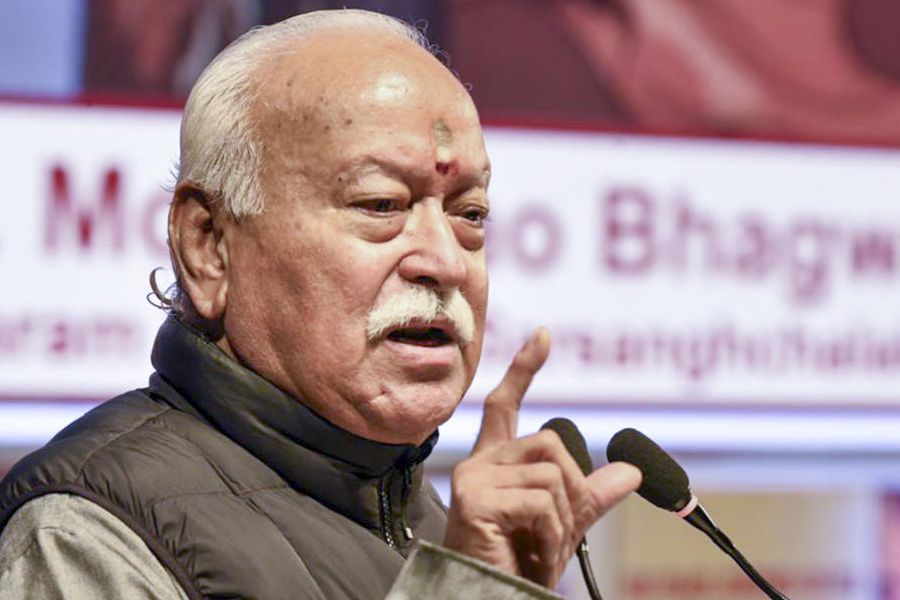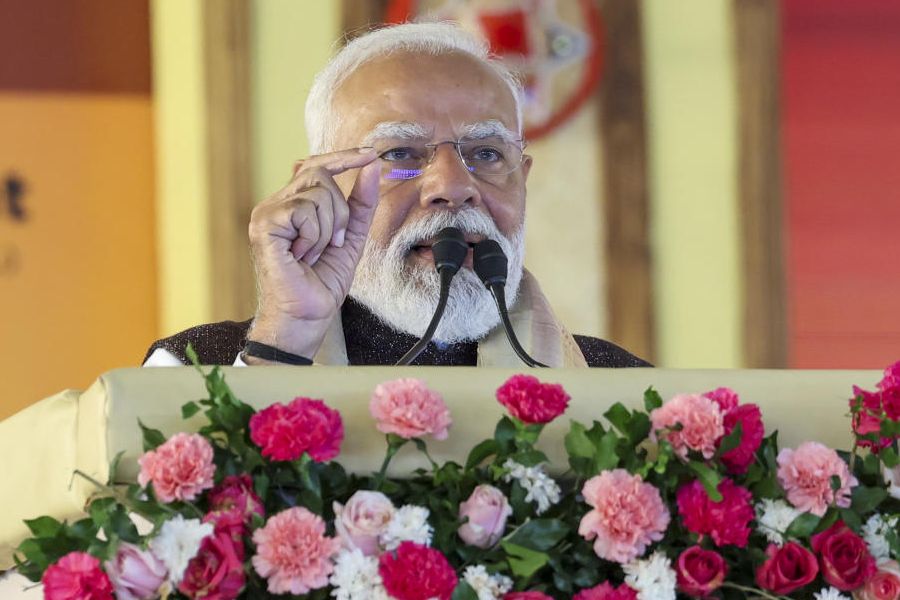 |
| Pix: Tim Yip |
London audiences are generous with their standing ovations but after Akram Khan has given his first performance of Desh at Sadler’s Wells and danced solo on stage for 80 minutes as probably he has never danced before, the ecstatic response is genuine.
For on this night, there is magic in the air.
Desh is a very personal dance drama, part Kathak, party western contemporary, which connects life in Wimbledon in south London where Akram was born, brought up and where he still lives, with the idyllic Bangladesh of his father’s imagination.
It is a moving piece of work, which reflects “the push and pull of life here and there”. It is also the lament of a son searching for his father whom he disregarded in life but who is now no more.
“It’s really nice when Bangladeshis come and respond by saying, ‘Oh, I know what that feels like, it reminded me of my father passing away,’ ” says Akram. “When I hear that, it makes it meaningful and purposeful for me to do what I do.”
What Akram does is dance. But that’s like saying Sachin bats.
 |
| Pix: Richard Houghton |
Desh begins with a man going through the dark of the night equipped with only a hurricane lantern, so evocative of village Bengal.
Akram synchronises his dancing to breathtaking screen animation, first dodging crazy traffic in Dhaka; then going through a lyrical Jungle Book-like sequence in the forest where he dips his hand into a beehive for honey, where a Kaa-like python wrapped round a branch keeps a wary eye on him, where an elephant suddenly appears and where thunder precedes torrential rain.
The forest dissolves into the barrel of a tank, reminiscent of that lone protestor defying the armoured columns in Tiananmen Square in 1989 but this is Akram capturing the recurring periods of military rule in Bangladesh. Images of demonstrators appear on screen, referring back to the popular uprising against General Ershad’s regime.
 |
| The dancer with his Kathak guru, Pratap Pawar, after the Desh performance Pix: Amit Roy |
In between, there are amusing snatches of dialogue with a call centre in Bangladesh as well as Akram’s conversations with his father and with a little niece back in Wimbledon.
Towards the end, the audience hears his father’s plaintive voice on the phone line from Bangladesh repeatedly appealing to his son to visit his native land: “Akram, your father is waiting.”
The recorded voice is indeed that of Akram’s real father, Mosharaf Hossain Khan, who is very much alive and waiting for his son to appear next door to Sadler’s Wells in the Lilian Bayliss Theatre which is used for rehearsals. With him is Akram’s mother, Anwara, who hangs back with her husband as Akram is feted by selected luvvies from the first night audience after possibly one of the most inspired performances of his dancing career which began when he was just a little boy.
He touches the feet of his dance guru, Pratap Pawar, who calls Akram “my child” and hugs him affectionately.
 |
| Pix: Richard Houghton |
Now 37, Akram is arguably at the peak of his powers. On this night he danced like a man possessed. The rhythm of lightning feet is expected of a virtuoso Kathak practitioner but he was able to bend, twist, rotate and manoeuvre his body into amazing shapes.
Sometimes, the silhouette of his form against the haunting blue of the background was a throwback to the age of Uday Shankar’s shadow dancing in India.
It was Uday Shankar’s younger brother, the sitar maestro Ravi Shankar, who after seeing Akram perform in The Jungle Book, when he was 10 or so, counselled his father: “Encourage him – one day he will be great.”
“After school I took my son to rehearsals every day,” says Akram’s father, who has preserved every newspaper clipping on his son.
 |
| Akram Khan with his parents, Mosharaf and Anwara Khan, after the Desh first night at Sadler’s Wells, London Pix: Amit roy |
Mosharaf Khan, who came to Britain from East Pakistan in 1969 and later ran a restaurant never told his son to “get a proper job”.
Akram was born in London on July 29, 1974. In 1985, he embarked on a two-year world tour when he was cast as Eklavya in Peter Brook’s momentous production of the Mahabharata.
“I owe everything to my parents, particularly to my mother,” says Akram. “She pushed me, not (just) encouraged me, when I was resisting but I have to say she was culturally very involved in the community with teaching dance. On Friday/Saturday, the whole night Rabin-dranath Tagore songs were being sung in the house with all the aunties and uncles sitting there in the living room.”
“If it were not for music, dance and theatre — the language of art — I would not appreciate (Bengali) culture as much,” he acknowledges. “Mum’s responsible for that. She spoke to me only in Bengali, never in English. She knew I would learn English at school. My mother was hugely influential in me dancing. My father went along with it and supported it.”
 |
| Akram synchronises his dancing to breathtaking screen animation that depicts scenes like this one where the protagonist encounters an elephant Pix: Richard Houghton |
Later, he received classical training from Pratap Pawar, who was also making his name as a dancer in London. “He trained me, he is still training me, he’s my guru.”
Over the years, Akram has collaborated with, among others, composer Nitin Sawhney, sculptors Antony Gormley and Anish Kapoor, French ballet dancer Sylvie Guillem and French actress Juliette Binoche.
He recounts how Tim Yip, who won an Oscar in 2000 for art direction for the martial arts film Crouching Tiger, Hidden Dragon, was persuaded to do Desh’s visual design. In fact, Akram says the idea of doing Desh came from Yip.
Akram and his Pakistani-born producer, Farooq Chaudry, who co-founded the Akram Khan Company in 2000, were in China in 2008. Both were huge admirers of Yip but had been unable to make contact with the Hong Kong- origin designer who had a Beijing office.
“Farooq went to catch him in his office but he was not there, so the next time I was performing in Beijing with Juliette Binoche we were at a dinner party and this gentleman across the table asked me who I would like to work with next. I said there is a wonderful visual designer called Tim Yip. He offered his hand and said, ‘We will do it.’ ”
As luck would have it, that man was Tim Yip.
 |
| Richard Houghton |
“Life is full of surprises,” smiles Akram.
“Then I spoke to him and said, ‘I don’t know what to do,’ and he said, ‘Do it on your roots.’ ‘Oh, my roots are in London.’ He said, ‘No, do it on your parents’ roots, go deeper.’ His is a big contribution because he came up with the whole cinography, mostly the visuals. He spoke to us about the design and the theme. He is the one who asked me to do something about Bangladesh. It was his idea.”
On the research trip to Bangladesh, Yip joined Akram and Farooq in the team that also included the music composer, Jocelyn Pook, lighting designer, Michael Hulls, and dramaturge, Ruth Little, a key figure. “We spent 10 days in Bangladesh, meeting political activists, school- children, artists, musicians, actors, theatre directors, fishermen, boatmen.”
Yip’s sketches were skilfully turned into video animation by a north London film company, yeastCulture. Akram and Paris-based poet Karthika Nair, jointly wrote the words. Nair also introduced the case of Nur Hussain, a martyr of the anti-Ershad movement who had pro-democracy slogans painted in Bengali on his body when he was shot dead. It is a dramatic image that lives on in the poster for Desh.
When Akram is dancing, he has perfect spatial awareness of the screen images so that when he reaches for the honeycomb, for example, his hands do go into the hive and not into empty space.
This takes “a lot of practice”, he emphasises. “To get it precise, you really have to know the animation, what comes next, how long after (the honeycomb) comes the elephant: two seconds, 10 seconds or six seconds? We spent a lot of time working on that.”
After London, Desh is due to tour Hong Kong, Bruges in Belgium, Luxembourg, Austria, France and the Netherlands. Both Akram and his father are determined Desh “will go to Bangladesh and to India”.
Akram and his wife, South African-born dancer Shanelle Winlock, live near his parents’ home in Wimbledon.
At Sadler’s Wells, almost the entire first night’s audience is white so does that mean that he now belongs to the arty European world and has left his father’s restaurant far behind?
“I don’t belong to anybody,” asserts Akram. “I would like not to belong to anybody. I do what I do. There’s a woman called Kumudini Lakhia, a choreographer (an innovative Indian Kathak dancer, aged 81, in Gujarat) and she always said, ‘I hold no flag for any country, I need both hands free to dance.’ That’s what I believe. The second you belong to someone you’ve limited yourself. You belong to the world.”
Desh’s reviews suggest that, at least, one British Bangladeshi has soared to heights in the arts world where others might be encouraged to follow.
“Undoubtedly among the best pieces that Mr Khan has created,” was the The New York Times verdict.
The Daily Telegraph found Desh “a transporting piece of dance”; it was “technically ingenious, theatrically unsettling and emotionally unbearable” to the London Evening Standard; and the Financial Times commended “the emotional force” of Akram’s dancing. The Guardian mentioned a “sublime image” when “a slow motion monsoon of silk ribbons descends on the stage.”
On first night, Anwara Khan smiles indulgently at Akram’s father: “He keeps all his cuttings.”











